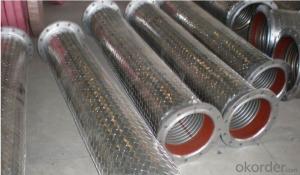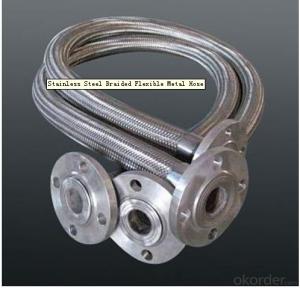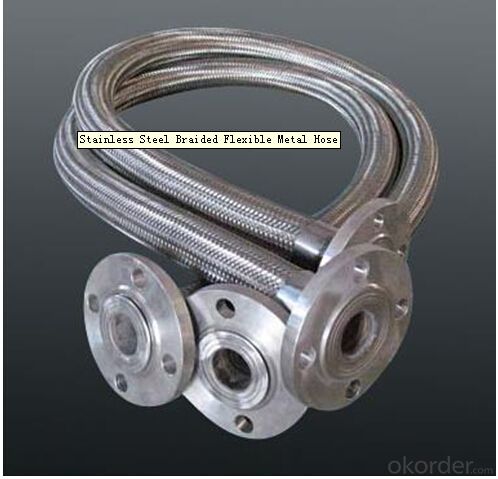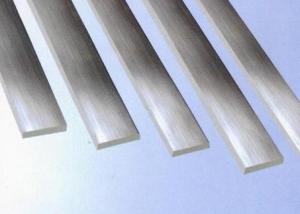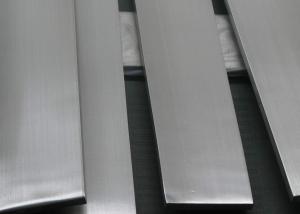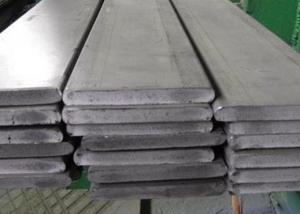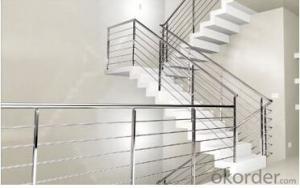Metal Hose in Stainless Steel for Gas Transportation
- Loading Port:
- Tianjin
- Payment Terms:
- TT OR LC
- Min Order Qty:
- 1000 pc
- Supply Capability:
- 100000 pc/month
OKorder Service Pledge
OKorder Financial Service
You Might Also Like
Specification
Metal Hose in Stainless Steel for Gas Transportation
Applications of Metal Hose in Stainless Steel for Gas Transportation:
--Refueling system
--Chemical and pharmaceutical industry
--Industrial hydraulic systems
--Air conditioners in industrial and construction –site vehicles
--Food and beverage industry
--Special and standard industrial applications
--Water and cleaning management
Features of Metal Hose in Stainless Steel for Gas Transportation:
1. )O. D.: 13-18MM 0.2-3M long
2. )Nut.: Nickel/Chrome Plated Brass (Zinc / Iron / Aluminum is available)
3. )Size Of Nut.: Female&Male 1/2''; 3/4''; 3/8''; 7/8''; 5/16'', and M10...
4. )Insert.: Brass (Zinc / Aluminum / Plastic is available)
5. )Inner tube.: Rubber/ EPDM/PVC
6. )Covered Material: Stainless Steel 201, 301, 304 /Aluminium Wire
7. )Working Pressure: 5Kg-15Kg
8. )Temperature: 0-92° C
9. )Quality Assurance: 3 years
RemarkAPPLICATION: HOUSEEHOLD WARE, BATHROOM WARE, SHOWER HOSE
PAYMENT: T/T, L/C
DELIVERY TIME: 20DAYS OR 30DAYS AFTER RECEIVED 30% DEPOSITS
MOQ: 5000PCS
ODM&OEM IS ACCEPTABLE
PackageInner: PP bag /Blister packing Outer: Carton box
Specifications of Metal Hose in Stainless Steel for Gas Transportation:
NO | I.D | Refer to O.D | Working pressure | Burst pressure | approximate Weight | |||||
(inch) | (mm) | (inch) | (mm) | MPa | Psi | MPa | Psi | kg/m | lbs/ft | |
1 | 1/8 | 3.2±0.2 | 0.35 | 9±0.3 | 2.06 | 300 | 8.27 | 1200 | 0.078 | 0.12 |
2 | 5/32 | 4±0.2 | 0.4 | 10±0.3 | 2.06 | 300 | 8.27 | 1200 | 0.092 | 0.14 |
3 | 3/16 | 4.8±0.2 | 0.43 | 11±0.3 | 2.06 | 300 | 8.27 | 1200 | 0.108 | 0.16 |
4 | 1/4 | 6.3±0.3 | 0.5 | 12.7±0.3 | 2.06 | 300 | 8.27 | 1200 | 0.134 | 0.2 |
5 | 5/16 | 8.0±0.3 | 0.56 | 14±0.3 | 2.06 | 300 | 8.27 | 1200 | 0.147 | 0.22 |
6 | 3/8 | 9.5±0.3 | 0.63 | 16±0.4 | 2.06 | 300 | 8.27 | 1200 | 0.182 | 0.27 |
7 | 15/32 | 12±0.3 | 0.75 | 19±0.5 | 2.06 | 300 | 8.27 | 1200 | 0.238 | 0.35 |
8 | 1/2 | 12.7±0.4 | 0.78 | 20±0.5 | 2.06 | 300 | 8.27 | 1200 | 0.262 | 0.39 |
9 | 5/8 | 16±0.4 | 0.94 | 24±0.5 | 1.03 | 150 | 4.12 | 600 | 0.351 | 0.52 |
10 | 3/4 | 19±0.4 | 1.13 | 28.8±0.5 | 1.03 | 150 | 4.12 | 600 | 0.515 | 0.77 |
11 | 1 | 25.4±0.5 | 1.38 | 35±0.6 | 1.03 | 150 | 4.12 | 600 | 0.637 | 0.95 |
Images of Metal Hose in Stainless Steel for Gas Transportation:
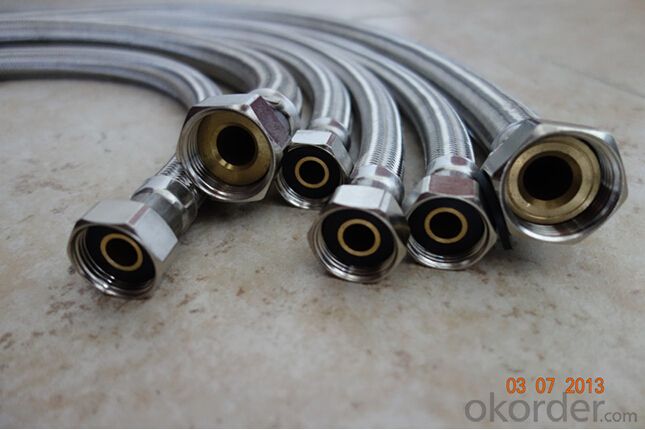
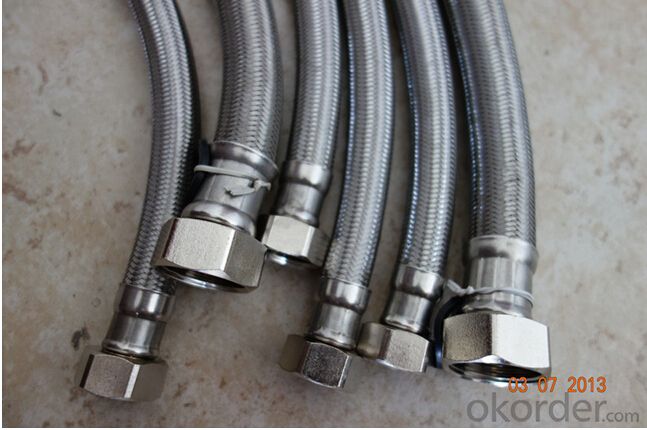
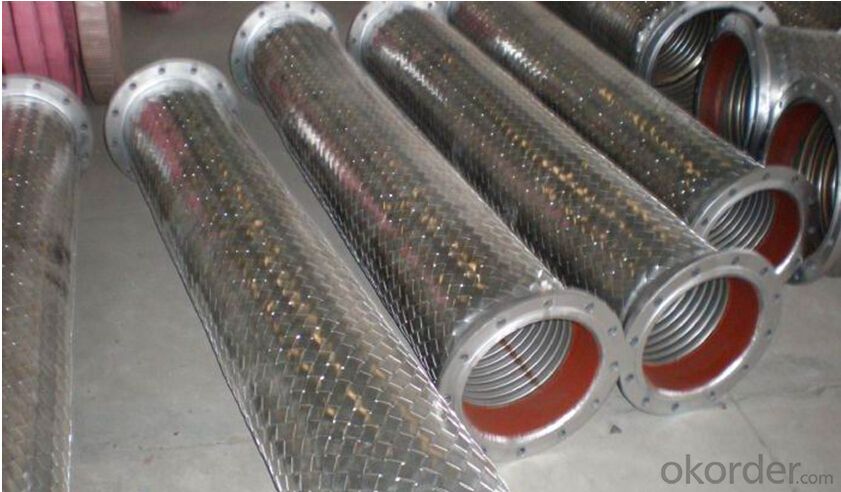

Package of Metal Hose in Stainless Steel for Gas Transportation:
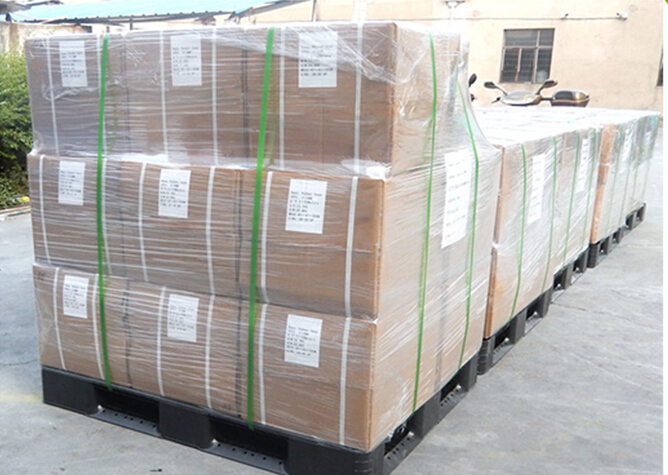
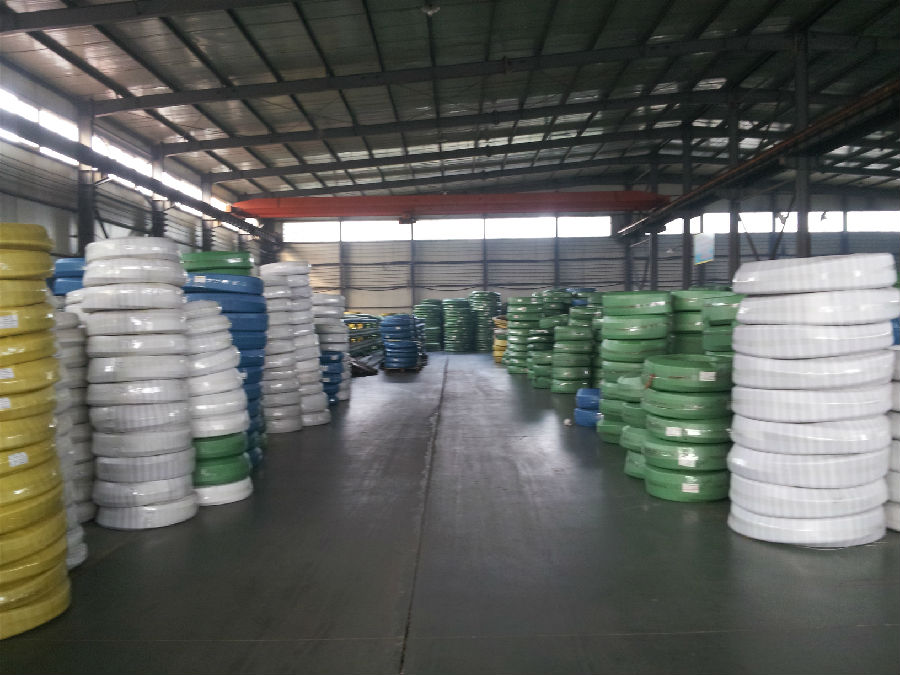
FAQ of Metal Hose in Stainless Steel for Gas Transportation:
Who we are:
Answer: We CNBM is a Chinese state-owned enterprise ranked 267th among the Global Fortune 500, as the largest building materials company,we have over 300 affiliated companies,and so many production lines and branch office distribute in China.
2. About our quality:
Answer: Every product needs to be quality proved before shipping.
3. About our service:
Answer: We could gurantte that we can reply you in 2 working hours.
- Q: Can stainless steel pipes be used for underground sewage systems?
- Certainly! Underground sewage systems can indeed utilize stainless steel pipes. Due to its exceptional durability and resistance to corrosion, stainless steel is an ideal material for underground applications that frequently encounter moisture and chemicals. It can effectively endure the demanding conditions of sewage systems, including the erosive properties of wastewater and the pressure exerted by the soil. Moreover, stainless steel pipes boast an extensive lifespan, minimizing the necessity for frequent replacements and upkeep. Nevertheless, it is crucial to carefully assess the unique prerequisites and regulations of the local sewage system, and seek advice from experts to guarantee appropriate installation and compatibility with other system components.
- Q: How do you calculate the bending radius of stainless steel pipes?
- To calculate the bending radius of stainless steel pipes, you need to consider several factors. The bending radius is determined by the diameter of the pipe, the wall thickness, and the type of stainless steel being used. First, you need to determine the outside diameter (OD) of the pipe. This can be measured directly or obtained from the pipe specifications. Next, you should identify the wall thickness of the pipe. This information is available in the pipe specifications or can be measured using a caliper. Once you have the OD and wall thickness, you can calculate the inside diameter (ID) of the pipe by subtracting twice the wall thickness from the OD. This is because the wall thickness is evenly distributed on both sides of the pipe. Now that you have the ID, you can calculate the bending radius. The bending radius is typically expressed as a multiple of the pipe's OD. The general rule is that the bending radius should be at least three times the OD for stainless steel pipes. However, this value may vary depending on the specific application and the type of stainless steel being used. It is important to note that bending stainless steel pipes beyond their recommended bending radius can lead to deformation, cracking, or failure. Therefore, it is crucial to follow the manufacturer's guidelines and consult with an engineer or a professional experienced in working with stainless steel pipes for accurate calculations.
- Q: What are the different types of stainless steel pipe coatings?
- There are several types of stainless steel pipe coatings that are used to enhance the durability, corrosion resistance, and aesthetic appearance of the pipes. Some of the common types of stainless steel pipe coatings include: 1. Fusion Bonded Epoxy (FBE) Coating: FBE coating is a thermosetting resin-based coating that is applied to the pipes using an electrostatic spray. It provides excellent corrosion resistance and adhesion, making it suitable for both buried and above-ground applications. 2. Polyethylene (PE) Coating: PE coating is a thermoplastic coating that is applied to the pipes using extrusion. It provides high impact resistance and excellent resistance to chemical substances, making it suitable for pipes used in harsh environments. 3. Polypropylene (PP) Coating: PP coating is a thermoplastic coating similar to PE coating but with higher temperature resistance. It is often used for pipes that transport high-temperature fluids. 4. Polyurethane (PU) Coating: PU coating is a thermosetting resin-based coating that is applied to the pipes using a spray or dip method. It provides excellent resistance to abrasion, impact, and chemicals, making it suitable for pipes used in demanding applications. 5. Zinc Coating: Zinc coating, also known as galvanization, is a metallic coating that is applied to the pipes using a hot-dip process. It provides excellent corrosion resistance and is commonly used for pipes used in outdoor and underground applications. 6. Ceramic Coating: Ceramic coating is a high-temperature resistant coating that is applied to the pipes using a thermal spray process. It provides excellent resistance to abrasion, oxidation, and corrosion, making it suitable for pipes used in high-temperature environments. 7. PTFE (Polytetrafluoroethylene) Coating: PTFE coating is a non-stick coating that is applied to the pipes using a spray or dip method. It provides excellent resistance to chemicals and high temperatures, making it suitable for pipes used in the chemical and food industries. These are just a few examples of the different types of stainless steel pipe coatings available. The choice of coating depends on the specific requirements of the application, such as the type of fluid being transported, the operating temperature and pressure, and the environmental conditions.
- Q: How are stainless steel pipes joined or connected?
- Stainless steel pipes can be joined or connected using various methods such as welding, threading, flanging, and compression fittings.
- Q: What are the different types of fittings used with stainless steel pipes?
- Some of the different types of fittings used with stainless steel pipes include couplings, elbows, tees, reducers, flanges, and valves. These fittings are designed to connect, redirect, or control the flow of fluids or gases in a stainless steel piping system.
- Q: What is the difference between 304J3 and 316J3 stainless steel pipes?
- The composition and corrosion resistance properties distinguish 304J3 stainless steel pipes from 316J3 stainless steel pipes. 304J3 stainless steel is characterized by its 18% chromium and 8% nickel content. This grade is known for its excellent corrosion resistance, high strength, and good formability. It finds applications in various fields, including food processing, chemical processing, and architecture. In contrast, 316J3 stainless steel comprises 16-18% chromium, 10-14% nickel, and 2-3% molybdenum. The additional molybdenum enhances its corrosion resistance, particularly against chloride environments. Consequently, 316J3 stainless steel is commonly used in more demanding situations such as marine environments, pharmaceutical equipment, and coastal structures. To summarize, the main distinction between 304J3 and 316J3 stainless steel pipes lies in their composition and resulting corrosion resistance. While both grades provide good corrosion resistance, 316J3 stainless steel offers superior resistance in chloride-rich environments, making it suitable for more challenging applications.
- Q: Can stainless steel pipes be used for chemical storage tanks?
- Indeed, stainless steel pipes have the capability to serve as chemical storage tanks. Renowned for its exceptional resistance to corrosion, stainless steel proves to be an optimal substance for the containment of chemicals. An extensive array of chemicals, such as acids, alkalis, solvents, and gases, face no challenge in penetrating its defenses. Furthermore, stainless steel boasts durability and strength, guaranteeing the structural integrity of the storage tanks. Moreover, its effortless cleaning and maintenance render it suitable for housing various types of chemicals. Nevertheless, one must exercise caution and thoroughly consider the specific properties and demands of the chemicals before opting for stainless steel pipes as chemical storage tanks.
- Q: Why is stainless steel magnetic?
- 304 stainless steel after cold processing, the structure of the structure will also change to martensite, and the greater the deformation degree of cold work, the more martensitic transformation, the greater the magnetic properties of steel. Like a lot of steel strips, the product is made up of 103 tubes, without obvious magnetic induction, producing 9.5 tubes. Due to the large deformation of the Ling bend, the magnetic sense is obvious, and the square tube produced by the utility model has larger deformation than the round tube, especially the folding part, the deformation is more intense, and the magnetism is more obvious. In order to completely eliminate the magnetic properties of the 304 steel caused by the above reasons, the stable austenite structure can be recovered by the solution treatment at high temperature so as to eliminate the magnetism. In particular, magnetic because it causes 304 stainless steel, and other materials such as stainless steel, carbon steel, magnetic 430 is not the same level, that is to say the magnetic steel 304 always showed a weak magnetic.
- Q: What is the difference between 446 and 316 stainless steel pipes?
- The chemical composition and intended use distinguish 446 stainless steel pipes from 316 stainless steel pipes. 446 stainless steel, a heat-resistant alloy, is ferritic and contains chromium, molybdenum, and small amounts of silicon and carbon. This composition grants 446 stainless steel exceptional oxidation resistance at high temperatures, making it suitable for the automotive, power generation, and thermal processing industries. It can withstand temperatures up to 1500°C (2730°F) and displays good corrosion resistance in specific environments. Conversely, 316 stainless steel is an austenitic, corrosion-resistant alloy containing chromium, nickel, and molybdenum. Due to its superior corrosion resistance and ability to endure harsh conditions, it finds wide application in industries such as food processing, pharmaceuticals, marine applications, and chemical processing. Additionally, 316 stainless steel offers good resistance to pitting and crevice corrosion, making it appropriate for chloride-containing environments. In terms of mechanical properties, 446 stainless steel generally exhibits lower tensile strength and hardness compared to 316 stainless steel. However, it compensates for this by providing better high-temperature oxidation resistance. Conversely, 316 stainless steel possesses higher tensile strength and hardness, resulting in superior overall mechanical properties. In conclusion, while both 446 and 316 stainless steel pipes offer corrosion resistance, their chemical composition and specific application areas are the key distinguishing factors. 446 stainless steel is primarily suitable for high-temperature environments, whereas 316 stainless steel is more versatile and extensively employed in various industries due to its superior corrosion resistance properties.
- Q: Are stainless steel pipes suitable for underground installations?
- Yes, stainless steel pipes are suitable for underground installations. Stainless steel is highly resistant to corrosion and can withstand harsh underground conditions such as moisture, soil chemicals, and temperature variations. Additionally, stainless steel pipes have high strength and durability, making them a reliable choice for underground applications.
Send your message to us
Metal Hose in Stainless Steel for Gas Transportation
- Loading Port:
- Tianjin
- Payment Terms:
- TT OR LC
- Min Order Qty:
- 1000 pc
- Supply Capability:
- 100000 pc/month
OKorder Service Pledge
OKorder Financial Service
Similar products
Hot products
Hot Searches
Related keywords
